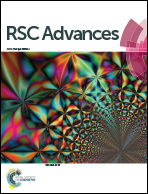Preparation and properties of composite separators with asymmetric structures for alkaline batteries
Abstract
A novel asymmetric separator with high electrolyte wettability and chemical stability was developed for alkaline batteries. This separator was fabricated from an electrolyte-absorbing layer (cellulose nonwoven, CN) and an alkali-resistant layer (PVdF–ZrO2 matrix), which were integrated together by a point-bonded method using polyvinyl alcohol fibers as the binder. The characteristic properties of the composite separator have been studied by structural characterization, contact angle testing, weight and dimensional stabilities, electrolyte-absorbing rate, and electrochemical behavior. Results showed that the composite separator had a uniform surface morphology and highly gradient three-dimensional porous structure, which led to a low electrolyte contact angle of 35° and an area electrical resistance of 0.08 Ω cm2. Moreover, it showed a low weight reduction rate of 7.5% and an area shrinkage rate of 2.0% in 40 wt% KOH solution at 333 K for 120 h. Due to the electrolyte-philic macroporous layer, the composite separator exhibited a high electrolyte-absorbing rate, which was higher than 55 mm for 5 min. These characteristics endowed the composite separator with excellent electrochemical performance, including a short activation time and a long dry/wet storage life. It is demonstrated that the composite separator can be a good candidate for alkaline batteries, especially for self-activated zinc–silver oxide batteries.


 Please wait while we load your content...
Please wait while we load your content...